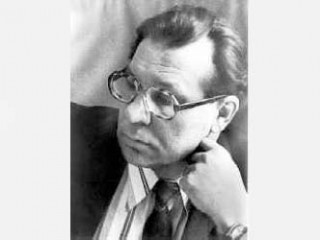
Valeri Legasov biography
Date of birth : 1936-09-01
Date of death : 1988-04-27
Birthplace : Tula, USSR
Nationality : Russian
Category : Science and Technology
Last modified : 2010-04-27
Credited as : Russian chemist and scientist, The nuclear disaster at Chernobyl, Institute of Atomic Energy
0 votes so far
Valeri Legasov was born in Tula into a family of civil workers. He graduated from the Mendeleev Moscow Institute of Chemistry and Technology and did his graduate studies in the Kurchatov Institute of Atomic Energy. He received the degree of Candidate in 1967 and his doctorate in chemistry in 1972, a remarkable achievement for a 36-year-old scientist. From 1983 until his death he was the chair of the department of Chemical Technology at the Chemistry Department of Moscow State University. He became a full member of the Academy of Sciences of the USSR in 1981.
Chernobyl disaster
By the time of the Chernobyl disaster on April 26, 1986, Legasov had become the First Deputy Director of the Kurchatov Institute of Atomic Energy. He became a key member of the government commission formed to investigate the causes of the catastrophe and to plan the mitigation of its consequences. He took the most important decisions to avoid repeat accidents and informed the government of the situation in the disaster area. He did not hesitate to speak to his fellow scientists and to the press about the safety risks of the destroyed plant and insisted on immediate evacuation of the entire population of Pripyat. In August, 1986 he presented the report of the Soviet delegation at the special meeting of International Atomic Energy Agency (IAEA) in Vienna. His report displayed depth of analysis and full honesty in discussing the extent and consequences of the tragedy.
Having exposed himself to radiation at the accident site, the scientist began to feel the effects on his health, along with suffering from depression which stemmed from lack of recognition.
On the second anniversary of the disaster, Legasov committed suicide by hanging himself from the stairwell of his apartment. Reportedly, before his suicide, he recorded himself on audiotape, explaining many previously unknown facts about the catastrophe, and highlighting systematic secrecy that prevented previous accidents and known problems with the design of the reactor and the control rods from being communicated to plant operators as important contributory factors in the disaster. This recording was analyzed in the BBC TV series Surviving Disaster: Chernobyl Nuclear Disaster. According to the programme, political pressure caused Legasov's report to the IAEA to be rewritten to remove mention of these flaws. It was implied that his suicide was at least partly due to his distress at not having spoken out about these factors at Vienna, the suppression of his subsequent attempts to do so, and the damage to his career that these attempts caused. The Bulletin of the Atomic Scientists also stated that Legasov had become bitterly disillusioned with the failure of the authorities to confront the design flaws.
Legasov's suicide caused shockwaves in the Soviet nuclear industry. In particular, the problem with the design of the control-rods in Chernobyl type RBMK reactors was rapidly admitted to and changed.
On September 20, 1996 Russian President Boris Yeltsin posthumously conferred to Legasov the honorary title of Hero of the Russian Federation for his "courage and heroism" shown in his investigation of the Chernobyl disaster.
















